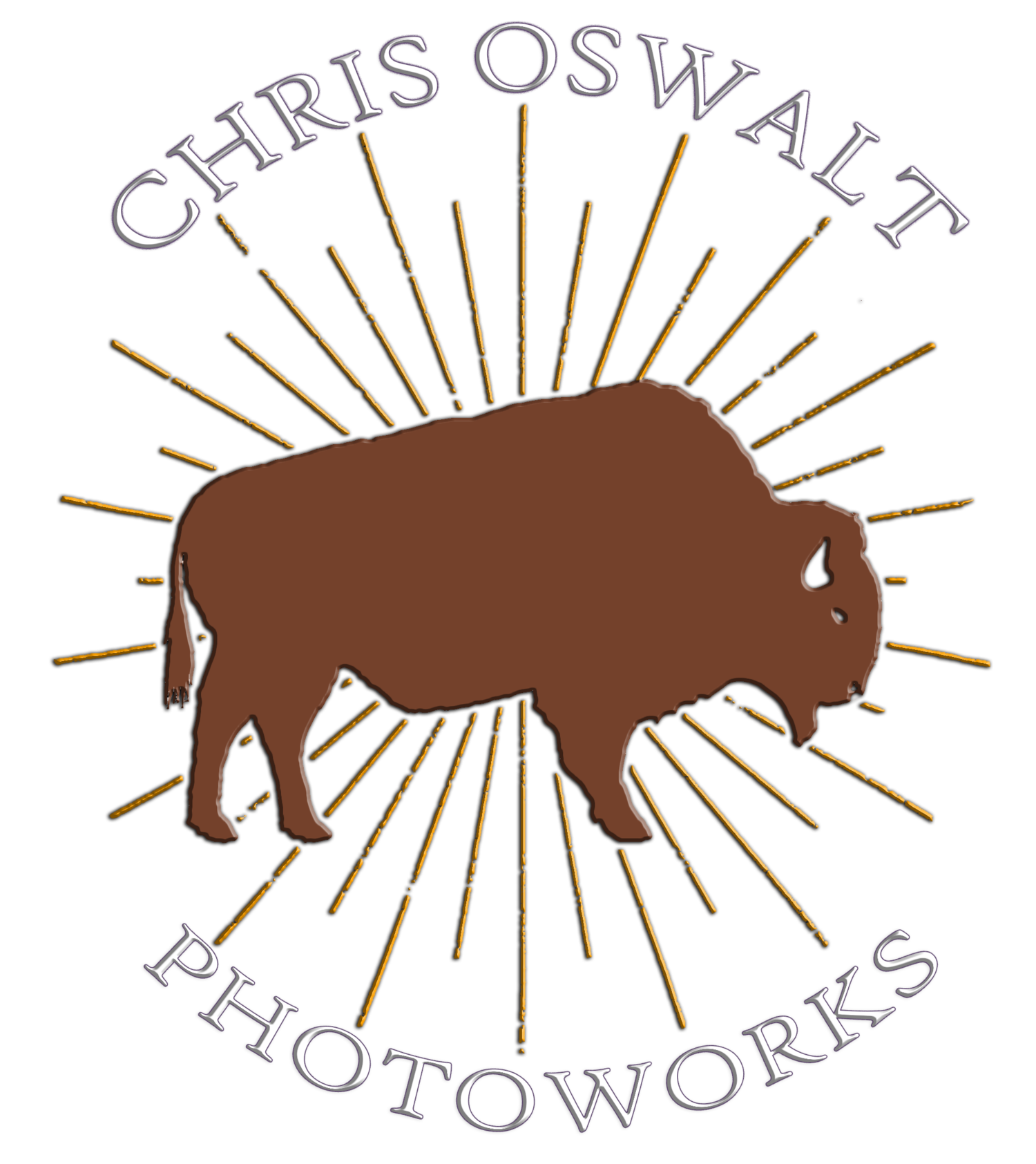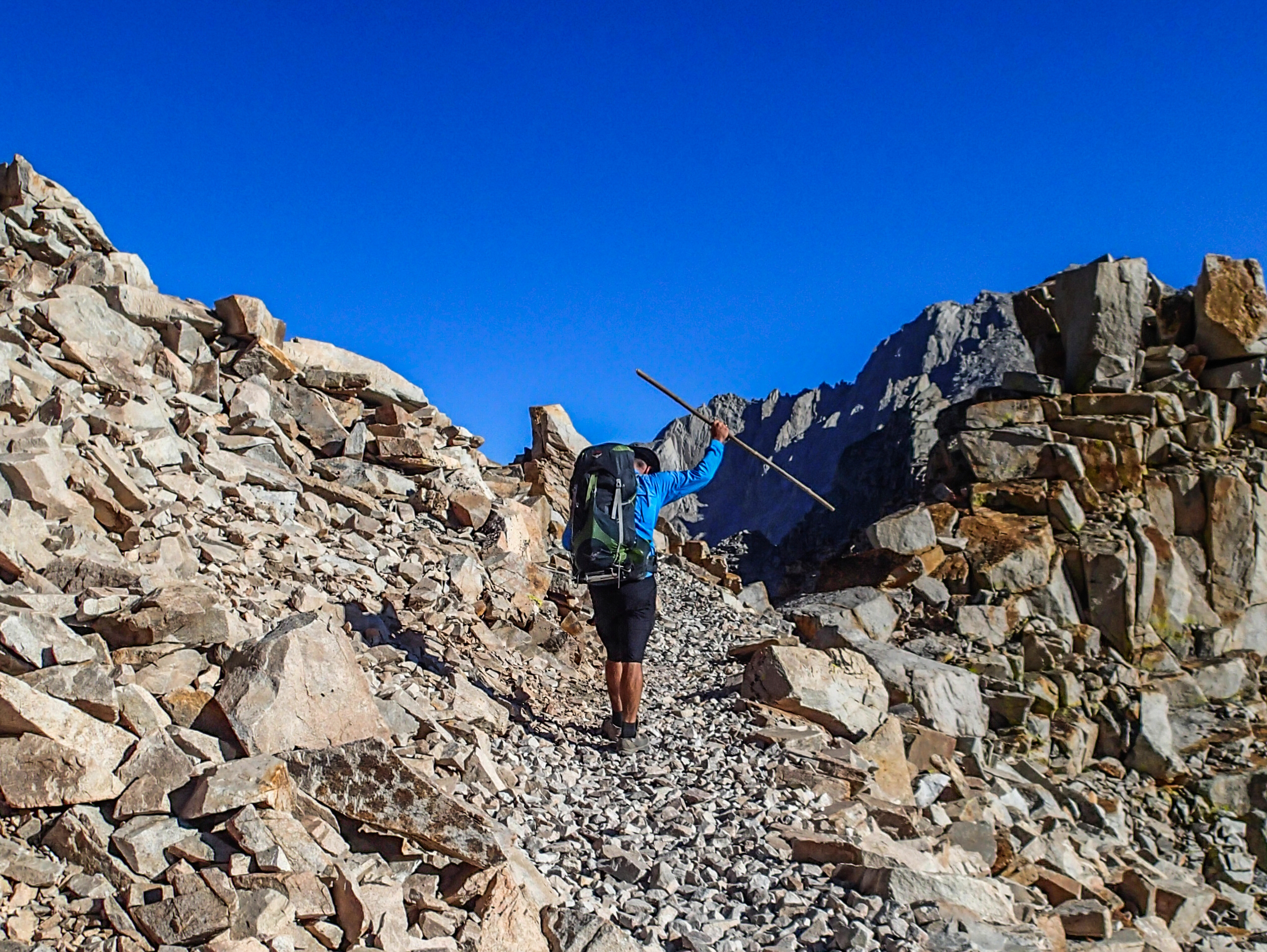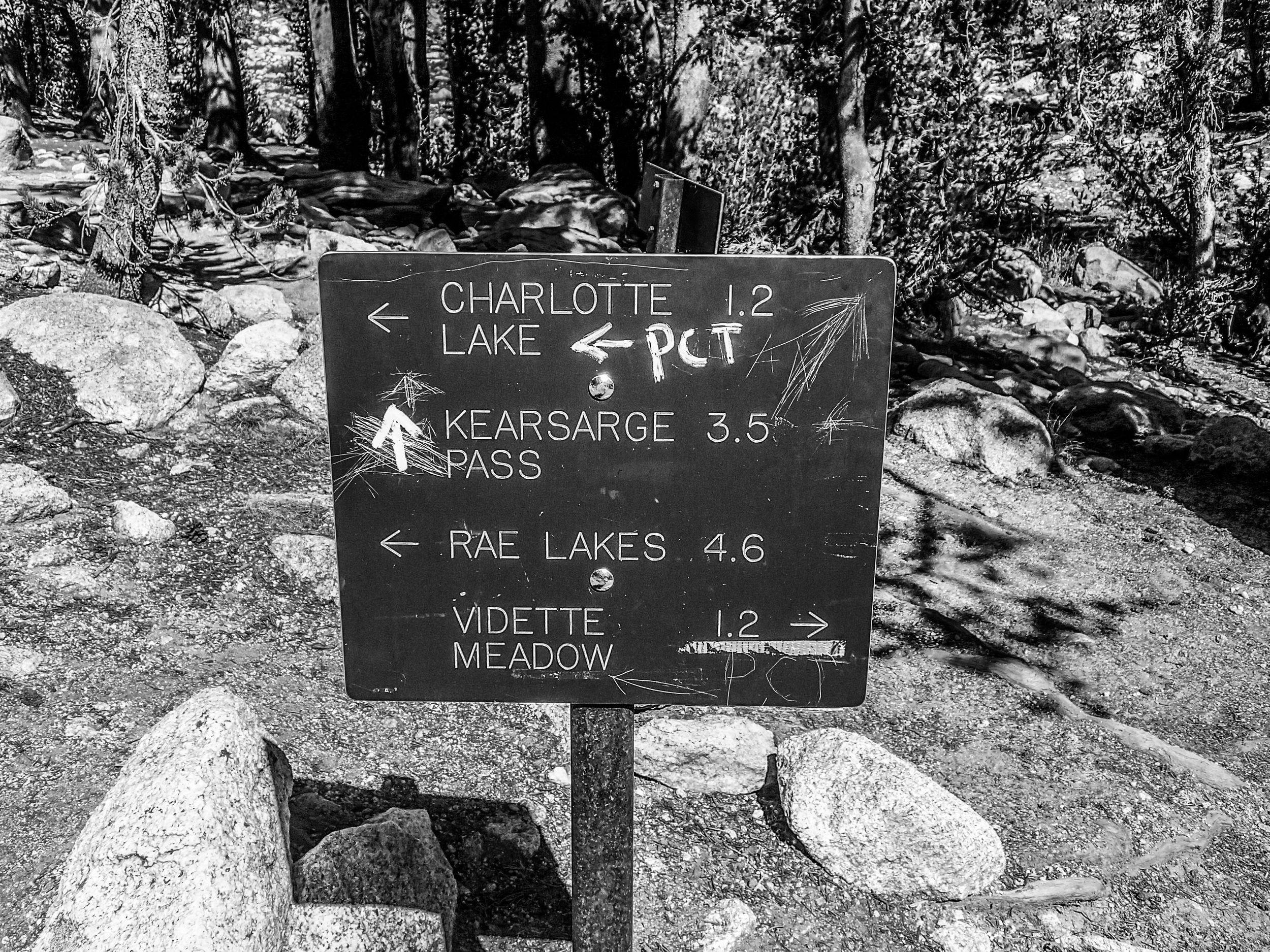On the shoudlers of giants
Factors for planning a hike are numerous and daunting: Shuttles, business hours, resupply packages, and the entire minutia associated with those is enough to make the planning part of the brain short circuit and freeze.
Then there’s the unknown: What if I have to reset a femoral fracture? What if someone gets altitude sickness? What if I get bitten by a snake? What if I get attacked by a bear? What if I get attacked by a bear that was contemporaneously bit by a snake? What if that snake had hypothermia? What if I get seriously hurt and no one knows where I am? What if someone kills me out here? What if I just wake up dead one day?
It’s never as bad as all of that, I assure you, but the fear of the unknown is very real. I was fortunate in that Lindsey was the planner, and she was a damn good one; the perfect mix of bookworm, researcher, and logistician. My approach was a much more audacious one, a tinge less methodical and consisting only of the following mentality: “You won’t die out here. Let’s go.”
I’ve come to rely on my problem solving skills, resourcefulness, and general outdoor skills to get me where I need to go. I think that setting a training plan, meal testing, and accruing lighter gear are all excuses to delay doing the hike. I dare say that I prefer when things don’t go to plan. That’s where adventure lives- in those strange crevices of unforeseen unpreparedness and ever changing conditions. As a hiking team we struck a complementary balance. She was 60% planner, 40% outdoor woman. I was 99% outdoor guy, 1% linguist that knew the definition of “plan.”
Over the course of the prior days, our plan had faltered. In the beginning, when we were young, we were going to hike the John Muir Trail, drink whiskey on Whitney, hike down to the trailhead, hitchhike to Lone Pine, shuttle back up to Yosemite. Some photos, some high fives, a cool story to tell, and then back to Texas.
The trail teaches you a lot of things. One of the first and most eye opening and valuable things I learned- You can get anywhere by putting one leg in front of the other and repeating. Over creeks, snowfields, mountains, roads…you’ll get there. No training regiment, guidebook, map, class, assurance, or safety net needed. Find the path in the dirt. Walk. Keep moving forward. Stay vertical. You’ll get there.
Beyond Glen Pass
Standing on Glen Pass, it was never more apparent that not only had our original plan faltered, but it had stalled, started a nose dive, and then caught ablaze. Our plan now was to eject, and there’s a whole lot less certainty that comes with that. Specifically- getting back to civilization once we reached the end of the trail. In truth, there really isn’t much you can do. We knew we were exiting. We’d deal with getting back to actual civilization when we hit asphalt in Onion Valley, similar to what we did when we started down that long asphalt stretch of road from Red’s Meadow to Mammoth…we’d walk until we got to Independence, some 13 miles down a winding mountain road. One foot in front of the next. In the worst case scenario, we could camp at the campground there before arranging transportation or hitching a ride. We’d figure it out…
After Lindsey emerged from behind the particularly beefy rock she’d chosen to hide behind, we didn’t tarry on the serrated ridge. Though we had no company on the pass and no one in sight on the trail in either direction, we knew we had miles to go and another mountain to climb before the day’s light was done so in short order we were steaming downhill on steep switchbacks.
My water bottle was about empty after the massive effort spent going over Glen Pass.
“I’m thirsty…” I whined.
Sometimes I thought that if I was an annoying, petulant child that it would make the miles go faster. Not that they needed to go faster, it was more of a way to entertain myself. Unfortunately, my audience didn’t like my act much and grew instantly tired of this bit every time I did it. This was often. It was a bit I adapted from Russel, from the movie UP. I paraphrased the movie lines and would typically spew forth the following in a whiney childlike voice, no fewer than 3 times per day-
“I’m tiiiiiired. My feeeeet hurt. I need to go to the baaaaathroom. Can we stop walking?”
It amused me every time. Lindsey groaned a few steps ahead of me and muttered something under her breath. Something good, undoubtedly. I smiled a satisfied smirk and remembered my water bottle that was in my hand.
“Oh yeah…almost empty…”
My smirk turned to a slightly perturbed grimace.
The trail was more sheltered from the wind on the southerly side, almost to the point of an eerie calmness. The rocks had morphed from black on top of the pass to grey to a tan color with the faintest amount of orange tint to them. The lot of rocks sat silent and baked in the warm sun. It was a dry and dusty descent in an otherworldly landscape of hard angular shards. Scree slopes and fallen boulders and the remnants of once proud spires lay beneath our feet with no sign of vegetation around. I like to imagine that we kicked up a fair amount of dust in our very deliberate descent. After 30 or 45 minutes, Charlotte Lake could be seen shimmering in the distance.
The stretch from the final Rae Lake to Charlotte Lake is long, and it’s quite dry. We were both low on water so it was a relief seeing the source of our impending hydration. 1st Rae Lake was the last reliable filling point, and the ascent over Glen and the xeric extraterrestrial rockscape on the other side offered only opportunities to suck down sips of water from an ephemeral spring here and there but never a spot to refill.
Descending Glen Pass
We walked the rocky wasteland further and as we descended it became dotted with greenery. Stout grasses at first, then some short pines that offered a respite from the strengthening afternoon sun. Soon the trees had gathered in density and height enough to pass for a sparse forest. A sparkling gem of ultramarine flashed through tall brown branches and long slender fingers of green pine needles.
“I’m thirtyyyy. I’m tiiiiiired….my feeeeeet hurt….”
Lindsey didn’t acknowledge me, but I thought the comedic timing was perfect.
One of the best parts about hiking is trail signs. Trail signs mean you’re getting somewhere. It means you have a choice (most times) or that you need to take in some important new information, like how there are no fires permitted, or how there are bears around that will take your foodstuffs. At the bottom of the steep, seemingly incessant descent we came to such a sign. It was your standard directional sign- an arrow pointing to Charlotte Lake, and arrow pointing down the John Muir Trail. I liked the sign so much I leaned on it while Lindsey went down a short spur trail to extract water from Charlotte Lake.
No sense in us both walking further than we had to…
There are two trails that exit over Kearsarge Pass. One is a high road, the junction for which meets up with the John Muir Trail about .3 miles before the turn off for Charlotte Lake. The high road doesn’t go by any water sources, though. The lower road takes you down in elevation but scampers past the junction to Charlotte Lake and the northern side of Bull Frog Lake before ultimately climbing back up the 300 or so feet lost as it meets the high road. Both paths converge after a couple of miles and turn in to a singular trail that leads over Kearsarge Pass and down to Onion Valley.
On a dusty, warm, barren clearing on a small hill we reached our junction with the low road. The sign stared at us like a bouncer. Kearsarge Pass via Bullfrog Lake, this way. John Muir Trail, the other way.
I knew if I stared and thought about the sign and the implications of our turn long enough I might over think things or continue down the JMT. I glanced at the sign, looked down the trail towards Kearsarge Pass and Onion Valley, and put one foot in front of the other. That was it. We were done with the John Muir Trail.
Some 5 or 6 weeks prior to that exact moment, a man that called himself Riley appeared at the end of the Onion Valley Road just west of Independence, California. It might not be ironic, but it is fitting, if nothing else, that this man would be the first person we’d have met in Tuolumne Meadows. Riley was camped adjacent to us in Tuolumne Meadows as he had just finished his trek from Kearsarge to Tuolumne; the exact opposite of our eventual path.
The first night of the entire trip, with the glow of the fire in the center of our world, and the world rife with excitement, wonder, and adventure, Lindsey and I listened to Riley talk of his failed attempts at getting a Whitney permit, of bear sightings, of sharing a single person tent with his girlfriend for a couple of nights when she joined him, and of the Rim Fire.
“Yeah I had to come in over Kearsarge.” He said.
I nodded and smiled, assuming he had mispronounced something since I’d never heard of anything called Kearsarge.
“Going South to North is hard, but by day 4 or 5 your body adapts and you’re good to go.” He’d said.
Riley was long gone by now, but I couldn’t help but think about him walking this same stretch of trail, only in reverse. We marched out knowing it was an end. Riley pounded the dirt with his trail runners knowing it was the beginning.
There’s uncertainty with beginnings. As the sun rises, no one knows what the day might bring. Just so on a hike of this scale. There’s expectation, a buildup, and finally a resolution; a sunset. For Lindsey and I, we could see the sun was setting sooner than we’d originally planned.
Kearsarge Pinnacles
We could see the sun setting literally as it set the mountains around us aglow in a warm light. Trail and trees and rocks and small rodents and mammals and dirt and switchbacks came and went as we advanced further down the trail and higher up the side of an exposed slope towards Kearsarge Pass. A magnificent ridge mirrored the other side of the valley we were climbing out of. The Kearsarge Pinnacles. Stark and sharp and steep. I stopped in the middle of the trail to admire them across from us and to catch my breath.
“I’m. Tired. My. Feet…”
I trailed off and drank some water.
It looked as though the pass was within sight, but I’d been burned too many times before to think for a single second that the end of a mountain climb could ever be in sight. It’s an attitude which makes for really anti-climactic summits because I’ve spent the whole climb conditioning myself to believe that whatever clearing or apex it is that I see…it CAN’T be the summit. I hate being disappointed.
The route to Kearsarge pass was similar to Glen Pass in that the final ascent was a long, drawn out gradient instead of a litany of short switchbacks. I like the long ascents more because after a while, it seems like you’re walking on a flat surface. You’re really climbing at about 10 to 20 degrees, but without the perspective added by switchbacks immediately above and below your position, it seems flat. The long gradient also affords a peak at your ultimate destination ahead, be that the pass or a false summit.
I sped up my pace as the gradient pointed dead ahead towards a distinct notch flanked by fractured, angular boulders on either side. The climbing…all of the daily, ceaseless climbing. This was it. All the steps, all the miles, all the contour lines on maps and vertical feet ascended: this was the final ascent. Everything else was literally all downhill. I started to get a sincere sense of overwhelming excitement. Every milestone and in a way, every step, was a final moment. Final water stop, final trail split, final pass, final climb, final step. I took a deep breath and relished in that moment as I approached the end of the uphill, exposed climb on the side of a mountain.
And then I saw the switchbacks above me.
“I warned you about that…” gloated the part of my brain that is smart enough to not walk down the cookie aisle at the grocery store.
“I thought for sure this time it would be different.” Replied the part of my brain that makes me eat a bag of oreos in one sitting.
4 switchbacks. The final 4 switchbacks followed by 400 feet of linear distance were all that stood between us and the high point of Kearsarge Pass. I walked in front of Lindsey, fueled by another microburst of adrenaline. As I stepped on to the ridge, I raised my walking stick above my head with one hand in triumph. On the pass I lingered, waiting for Lindsey.
That very point I stood held a lot of power. It was a spot that divided east from west, light from shadow, Fresno Country from Inyo County, National Park from National Forest, victory from defeat, the trail from home. Lindsey joined me not long after and we rested and took the requisite photos.
Beyond the pass: An absolutely gnarly traverse across a seemingly infinite slope of rock, a steep descent and a long, lush valley of pines and lakes and streams.
I stared in to the setting sun and gave a look back on the High Sierra, the unrestrained rays of light assaulting and bleaching the grey and white granite, casting shadows on where we were to be heading. The wind blew cool, clean and quietly over the countless peaks and spires and notches and serrations of the Sierra, hiding thousands of secret valleys and pristine lakes. Going over Kearsarge pass was like walking out the door of a strange, beautiful, enchanting, enrapturing landscape where your only job and your only responsibility is to exist; to be. As I stood there looking west on the shoulders of a giant, gazing at the place from whence we’d come, I saw further than I’d ever seen before.
The atmosphere that rests high atop the granite spires of the Sierra Nevada is clear, and not surprisingly, I found that clarity of mind comes with it as well. I saw the landscape as it was, but also salvation and life as it was meant to be lived. For a mere 18 days we lived the bulk of our lives sleeping inches above the dirt in a non-permanent structure, but it felt like a wonderful life time. Our days were filled only with hiking. Thinking. Talking. Arguing. There were no bills, no deadlines, no current events, no sports, no shootings, no new products. It was pure; simple. The mountains absorbed the foolishness of everyday life and the lunacy we force ourselves to deal with as we swallow the putrid pill of social acceptance that we determine we must take so as to fit in with the rest of the majority who have chosen that medication as well.
The mountains didn’t care that we were there. They neither shunned nor accepted us. And that humbling feeling of total insignificance was absolutely liberating. The mountains were not our world that we’d created, tamed, and bleached; The elements fought out here, and we were travelers through their battlefield. The clouds cried and when particularly enraged, they would spit pellets of ice. Trees lived, died, and lay on the ground to rot. The winds would whip and howl strong enough to move mountains and in the next breath, blow a gentle breeze across our brow. Streams would flow in to lakes which would feed torrents and roaring waterfalls, or lakes would dry up from a lack of snow melt and wither in the light of day. Under the golden orb of the sun and beneath an effervescent spectator of a color changing sky, the world put on its show and for a short time, we had a front row seat to see things as they were meant to be; to see the world as the world was before it became infected with waste and filth and trash and excess and garbage.
I turned away from the sun to look at my shadow in front of me, and I moved my right foot down the trail. The left foot passed it. We had been in a paradise.
A few steps and it was gone from sight, and we were gone from it.
In every sense, as I stepped on the other side of the crest and began past Kearsarge Pass, I was leaving heaven on earth. And that’s a very strange, very wrong sensation.













